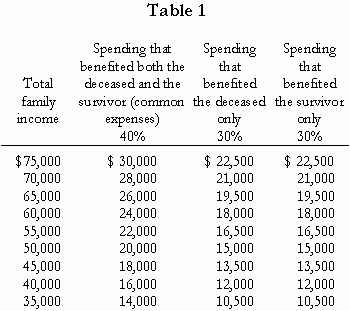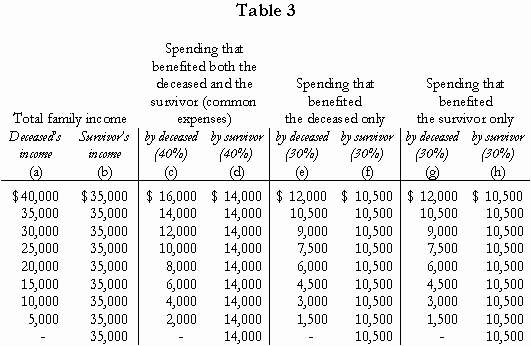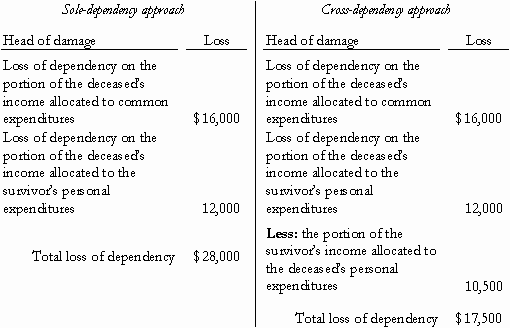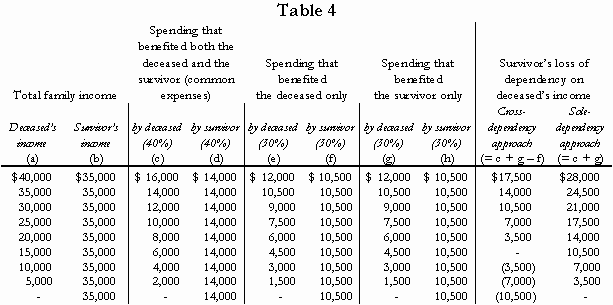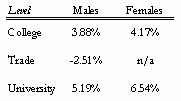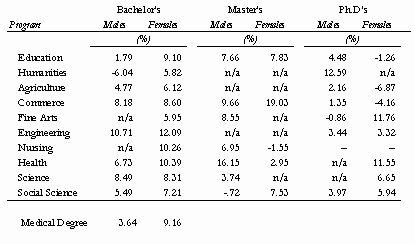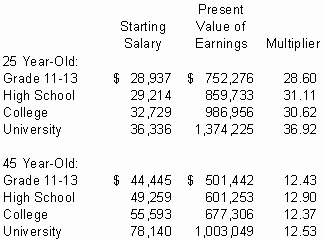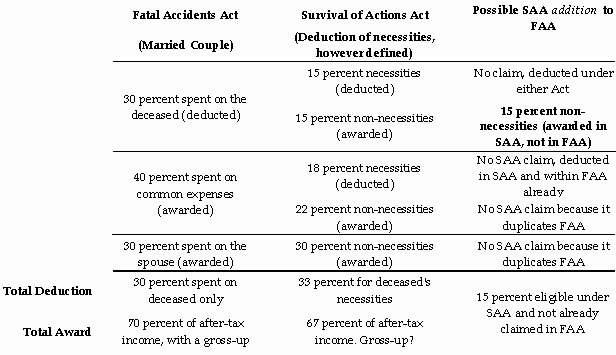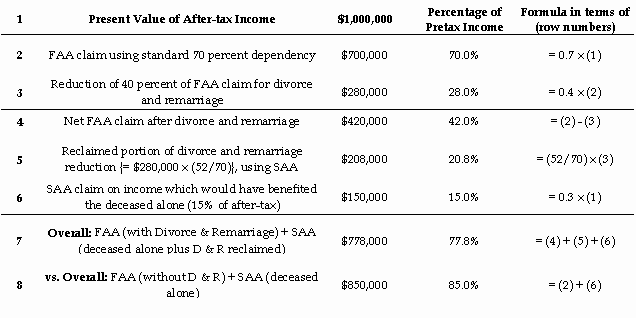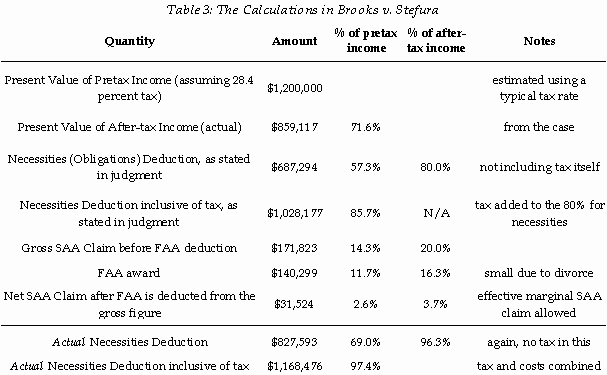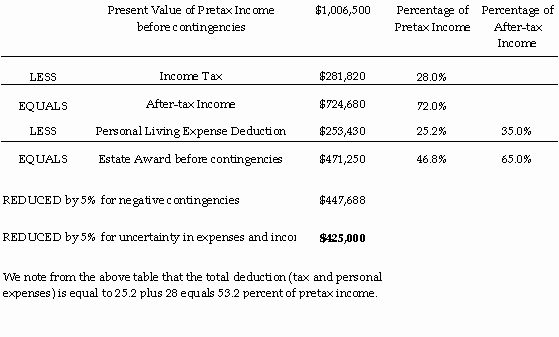by Matthew Foss
This article was originally published in the autumn 1999 issue of the Expert Witness.
In the last decade, there has been a dramatic increase in the number of sexual assault victims who have sued their abusers in tort. The purpose of this article is to offer a brief review of the academic literature concerning the impact of abuse on the victim’s psychological well-being, education, and earning capacity. A second article, to be published in the next issue of this newsletter will discuss the response of the courts to these lawsuits.
Caveat
Any survey of the sexual abuse literature must begin with a caveat concerning the reliability of the research – that being that much of this research is unreliable due to the use of naïve or biased techniques.
One type of research investigates samples of adult patients in therapy. Since participants in these surveys are already in treatment, there is little doubt that the studies will find that the victims of abuse have disorders. In most cases, adequate control groups are not used to compare the results with, nor are measures taken to find the proportion of sexual abuse victims that sought out clinical treatment. Therefore, most of the results from these studies are questionable at best.
The other major type of research is biased in the other direction. Samples from the general population are taken. Although this gives a slightly more representative sample, in that it has a built-in control group, those that might have been most seriously affected by sexual abuse, the patients at mental institutions, are excluded.
Also, many of these samples use data that were not collected using consistent definitions of sexual abuse. Koverola et al argued that making a distinction based on the severity of the type of sexual abuse is arbitrary, and is likely meaningless. The magnitude to which intercourse is more damaging than manual penetration is difficult to determine, if it exists.
Moreover, the data are often based on subjective recall by survivors, with no objective methods to validate responses. Wachtel and Scott assert that many studies do not differentiate between the different forms of child sexual abuse, nor have they used a standardized outcome measure for cognitive or psychological functioning.
Wachtel and Scott further argue that researchers have an incentive to exaggerate the consequences of the sexual abuse. Their reason for this is to induce more support. If the effects are seen to be minor, then the need for response is also small
Impacts on Psychological Well-Being
Finkelhor and Browne reviewed the child sexual abuse literature. They found that at least eight non-clinical studies had reported that women within the general population, with a history of child sexual abuse, had identifiable mental health problems. They also found that only one study that attempted to find mental health impairment, in a non-clinical sample, had failed to find it.
According to the authors, among the more commonly found problems were: depression, self destructive behavior, anger and hostility, poor self esteem, feelings of isolation, difficulty trusting others, marital and relationship problems, and a tendency towards revictimization. Moreover, Finkelhor and Browne found that child sexual abuse was frequently cited as a background to substance abuse, prostitution, multiple personality disorders, and borderline disorder.
They further found that five empirical studies had shown that child sexual abuse was associated with increased likelihood of subsequent victimization Moreover, sexual abuse victims were more likely to be in abusive relationships. Their hypothesis was that sexual abuse makes victims more vulnerable to abusive individuals, or perhaps unable to anticipate dangerous sexual situations.
Conte, Berliner, and Schuerman employed a sample of 369 child sexual abuse victims that were assessed at the time of disclosure, and seen at a sexual abuse center. Two measures were used to assess the subjects, a symptom checklist was completed by the health care worker and a child behavior profile was completed by the non-offending parent. The victims ranged in age from four to seventeen years of age. The definitions of sexual abuse and their reported frequencies, within the sample, included: oral sex, 18% of the population; vaginal-penile intercourse, 19% of the population; and fondling, 62% of the population.
The results, as measured by the symptom checklist completed by the health care workers, showed that 18.7% of the sample had signs of depression, 32.8% exhibited low self esteem, and 15.4% had signs of academic problems. The authors found that victims of child sexual abuse differed from a comparison group, in a statistically significant manner, in a number of areas. These areas included: a lower self-esteem, more aggressive behavior, more fearful, and more difficulty in concentrating.
Wachtel and Scott concluded that there were three types of effects. The first of these are direct impacts, such as anxiety and low self-esteem. Second, there may be manifestations of these direct impacts, like school problems or sleep disorders. Finally, symptoms may arise from unsuccessful or dysfunctional attempts to cope. Among these are delinquency and prostitution.
Sauzier, Salt, and Calhoun used a sample of children entering the Family Crisis Program. Examining the preschool children in their study, they found that compared to a control group of “normal” children, their sample exhibited significantly higher overall pathology, and more specific difficulties. Most importantly, cognitive ability was significantly lower for the sample group than for the ‘normal’ group. However, there were not significant differences with respect to antisocial behavior, intellectual deficit, and hyperactivity.
Looking at a pre-adolescence group, the seven to thirteen year olds, a similar trend was evident. The abuse victims exhibited more psychopathology than did the normal group. However, in this age group, both academic disability and learning disability were not statistically different from the treatment group.
Sauzier, Salt, and Calhoun reached several postulates as a result of their study. First, children that suffered physical injuries during the sexual abuse were at greater risk for exhibiting behavioral problems. Moreover, those suffering aggression would be likely to be hostile and have fears about the aggressiveness of others. They observed that the age of onset and the duration of abuse were not related to negative effects on the child.
Suprisingly, they found that children who were sexually abused by stepfathers exhibited lower self-esteem than those children that were abused by their biological fathers. Their explanation for this result was that children with stepparents were more likely to have suffered from disrupted family environments. Angry reactions on the part of the mother after learning of the abuse were related to lower self-esteem, as should be expected.
Nash, Zivney, and Hulsey investigated a sample of 102 randomly selected sexual abuse cases that were being treated at a clinic in Dallas. The results of their study showed that children who were abused by more than one perpetrator were the most likely to suffer impairments. Other factors that made the abuse more likely to generate severe outcomes included: the earlier the abuse started, the greater the number of incidents, and the frequency not the duration of the abuse.
Crucially the authors found that the prognosis was worse when the family had been disrupted. They concluded that a child facing sexual abuse might be a product of a very neglectful household. Given this factor, it may be very difficult to determine where the effects of the neglect end and the effects of the sexual abuse begin.
Wachtel and Scott argue that it is important to examine the environment within which child sexual abuse occurs. Factors that often are associated with child sexual abuse are physical abuse, neglect, and parental alcoholism. It may be that the apparent symptoms of the abuse would have arisen even if the abuse had not occurred, because of the presence of these other negative influences on the child’s well-being. Furthermore, even if these other factors did not themselves “cause” psychological harm, they may have inhibited the victim’s ability to cope with abuse.
Wachtel and Scott also argue that if we accept that child sexual abuse is a complex situation that includes other factors beyond the sexual abuse, then we need to re-examine the question that we are asking. Instead of asking does child sexual abuse result in negative outcomes for victims, or what are the impacts of child sexual abuse, the questions need to be refined. Questions such as what effects are specific to child sexual abuse, and what are the incremental effects of child sexual abuse when neglect or physical abuse are also present, need to be examined.
Finkelhor and Browne argued that most studies were better at establishing the fact that sexual abuse constitutes a risk factor for later long-term effects than at determining the magnitude of the risk. They argued that less than one third of victims of child sexual abuse show serious psychopathology, although the remaining two thirds are not symptom free.
In an attempt to determine what the more significant factors were that made a victim more likely to suffer more serious outcomes, Finkelhor and Browne considered several possible factors. They cited Russell’s finding that 59% of victims suffering completed or attempted intercourse, or oral sex said that they were extremely traumatized. They also argued that not all studies established a difference between the impacts of abuse by a relative compared to a non-relative. Their speculation was that this distinction might not model the closeness of the relationship. It may be possible that a friend of the family may have more of a bond with the child than a distant relative.
They did find that the use of force was an important traumatic factor. Victims that suffered physical coercion had increased trauma. The duration of the abuse was associated with increased trauma in only three of eight studies that examined this relationship. Perhaps this is due to the fact that duration does not always capture frequency. For example, it is possible that an abusive situation might last for a period of years with only two or three incidents. Compare this to a situation where the abuse takes place over a week but involves a dozen or more instances of sexual abuse
The Effects on Education and Standard of Living
Reyome studied the school performance of sexually abused and neglected children. These were compared with non-abused children drawn from two groups -from families on public assistance and from lower middle-class families. Information was gathered on the cognitive achievement of all the subjects.
When school-based measures were used, the sexually abused children were more likely to have received lower grades than the control groups. Spelling and math achievement exhibited the largest differences. Moreover, almost half of the sexually abused students had repeated a grade, compared to less than one-third of the matched public assistance, and one-sixth of the matched lower middle class students.
Macmillan argued that the consequences of abuse included both the amount of education a victim hopes to attain, and the amount of time and energy that is given to schoolwork. This lowered investment in education was expected to both lower grades and interfere with the level of education that a victim would attain. Moreover, he argued that since educational attainment is a key determinant of occupational status, victimization would have the effect of lowering occupational status.
To test his model, Macmillan made use of two data sources: the U.S. National Youth Survey, a longitudinal study involving 1725 youths aged 11-17 that took place over a ten year period; and the Canadian General Social Survey (1993).
Using the National Youth Survey, Macmillan reported that adolescent victimization has a negative impact on earnings. Using three measures of violent victimization, he found that earnings per hour were one dollar lower for those that were victims. However, he did not find, when looking only at sexual assault, that there was a statistically significant difference over non-victims.
When Macmillan used the GSS data, he found that sexual assault victims suffered an income deficit of about $6000 per year. Again, the data supported his model showing that an additional year of education was associated with an increase in income of $1500 per year.
Macmillan further tested to see whether there was an impact of age of the victim at the time of abuse. His findings were that when the victim was in adolescence during the victimization, annual income was decreased by $6000 using CGSS-93 data. This is compared to an annual decrease of $3700 when the victim was eighteen or nineteen at the time of the violence. Macmillan argued that this again was consistent with the life course model. The greatest damage to earnings is done during adolescence, when the victimization has more impact on the socio-economic life course.
Summary
Briefly, I believe that the following conclusions can be drawn from a review of the academic literature:
- Not all victims of sexual abuse suffer long-term, observable psychological harm. Indeed, as many as two-thirds of victims show no significant effects.
- Abuse may be more harmful if it is prolonged or violent.
- Victims suffer from depression, anger, hostility, marital problems, and self-destructive behavior.
- Victims of sexual abuse are at increased risk for further sexual assault, such as rape; and show a high risk for substance abuse and prostitution.
- In many cases, it is not clear whether it was the sexual abuse itself, or the unhealthy psychological climate in which the child lived that led to the perceived psychological damage. Many victims of sexual abuse live in dysfunctional families, often with long histories of substance abuse and marital discord.
- Evidence of the long-term effects of abuse on educational attainment and labour market earnings is not strong. Some studies have found significant effects, but the number of statistically reliable studies is extremely small.
References
Asher, S.J. “The Effect of Childhood Sexual Abuse: A Review of the Issues and Evidence” In Walker, L. E. A. (Ed) Handbook on Sexual Abuse of Children, (New York: Springer Publishing Company, 1988) pp. 1-17
Bagley, C. and K. King Child Sexual Abuse: The search for healing, (London: Tavistock/Routledge, 1990)
Bell, D. and K. Belicki “A Community-Based Study of Well-Being in Adults Reporting Childhood Abuse” Child Abuse and Neglect Volume 22 No. 7 (1998) 681-684
Cantwell, H.B., “Sexual Abuse of Children in Denver, 1979, Child Abuse and Neglect, 5, (1981), 75-85.
Chandy J. M., R. Wm. Blum., M.D Resnick, “Gender-specific Outcomes for Sexually Abused Adolescents” Child Abuse and Neglect, Volume 20 No.12, (1996), 1219-1231
Conte J. R. and L. Berliner “The Impact of Sexual Abuse on Children: Empirical Findings” In Walker, L. E. A. (Ed) Handbook on Sexual Abuse of Children, (New York: Springer Publishing Company, 1988) pp. 72-93
Conte, J. R., L. Berliner, and J. Schuerman, Impact of Sexual Abuse on Children, unpublished: University of Chicago School of Social Service Administration, (1986).
Finkelhor, D. and A. Browne “Assessing the Long-Term Impact of Child Sexual Abuse: A Review and Conceptualization” In Walker, L. E. A. (Ed) Handbook on Sexual Abuse of Children, (New York: Springer Publishing Company, 1988) pp. 55-71
Koverola, C. et al “Relationship of Child Sexual Abuse to Depression” Child Abuse and Neglect Volume 17, (1993) 393-400
Macmillan, Ross “Adolescent Victimization and Income Deficits in Adulthood: Rethinking the Costs of Criminal Violence from a Life Course Perspective”, Working Paper Department of Sociology University of Minnesota, (1999)
Nash, M. R. , O. A. Zivney, and T. Husley “Characteristics of Sexual Abuse Associated With Greater Psychological Impairment Among Children” Child Abuse and Neglect Volume 17 (1993) 401-408
Reyome, N.D. “Comparison of the School Performance of Sexually Abused, Neglected and Non-Maltreated Children”, Child Study Journal, Volume 23 No. 1 (1993), 17-38
Russell, D.E., “The Incidents and Prevalence of Intrafamilial and Extrafamilial Sexual Abuse of Female Children” Child Abuse and Neglect, 7 (1983), 133-146.
Schwartz, B.G. et al Child Sexual Abuse (Newbury Park: Sage Publications, 1990) pp. 75-108
Wachtel, A. and B. Scott “The Impact of Child Sexual Abuse in Developmental Perspective” In Child Sexual Abuse Critical Perspectives in Prevention, Intervention, and Treatment (Eds) Bagley, C.R. and R.J. Thomlison (Wall & Emerson Inc: Toronto, 1991) pp 79-120

Matthew Foss was an MA student in the Department of Economics at the University of Calgary
